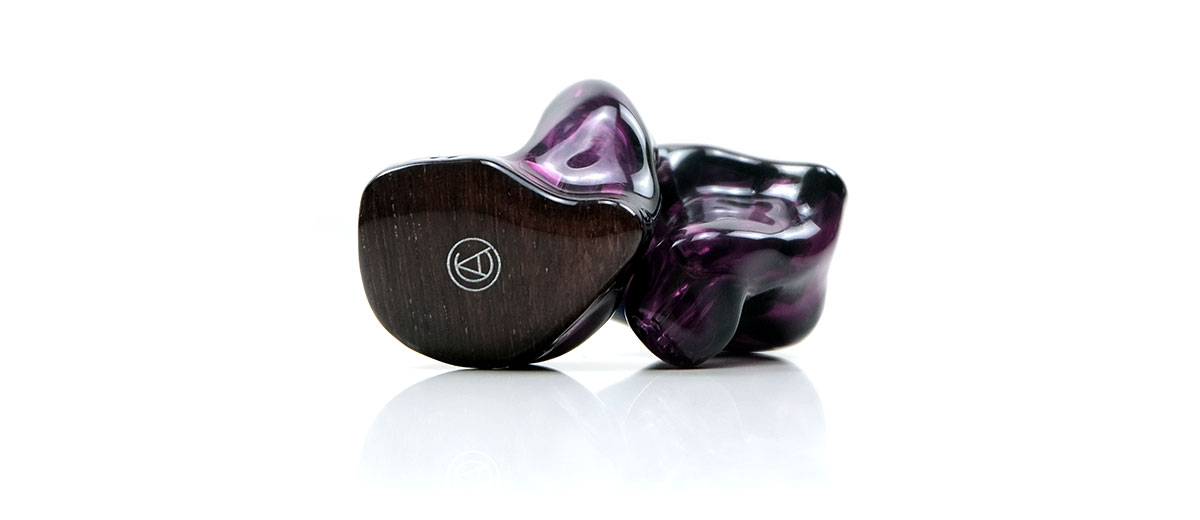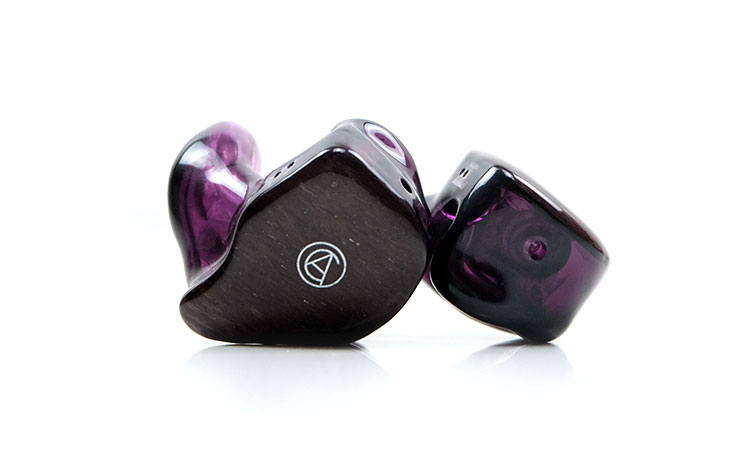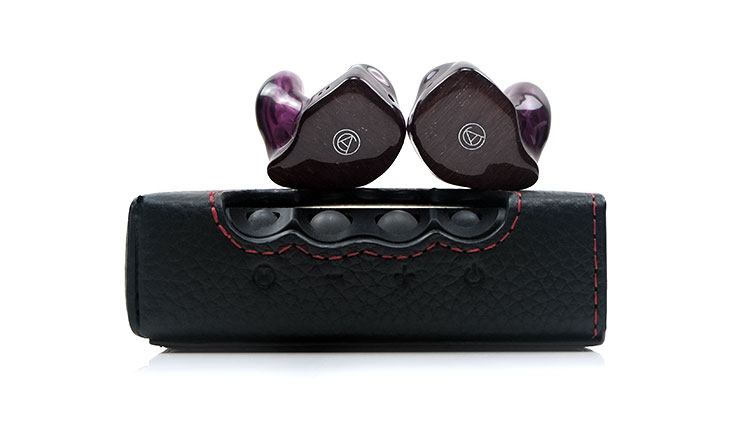Sound Impressions
Summary
On a high level, the FIBAE 5 is a mildly w-shaped sound signature with an emphasized bass, solid highs, and a decent level of pinna gain for vocal presence. However, that might be a very simplistic description because there is a lot more going on here.
For a start, the upper mids and treble delivery in the custom format are gorgeous. CA has done an excellent job tuning those planar tweeters to offer some very juicy treble overtones without tipping them over into unbearable sharpness.
It sounds nothing like a typical BA treble, a lot more physical but at the same time nicely balanced in terms of attack and decay. I always remembered older planar driver headphones struggling to break free of that metallic aftertaste in highs a few years ago. You get none of that here.
I cannot say if that is the same for the universal format but for the custom version the upper mids and highs shine a little bit stronger than the dynamic driver lows, that is, unless you feed that dynamic driver some quality output power.
If you do, then it tightens up with excellent dynamics and once the FIBAE 5 gets snappy then the whole presentation sounds a lot stronger and bigger for it.
Is it a neutral timbre? No, it’s definitely colored with warmth in the lows and some definite sparkle in the highs. The mids are clean and a little light on their feet texture wise but they have some excellent presence and space around both instruments and vocals to sound clear and detailed.
This is a very engaging and fun-sounding tuning so reference lovers will never really gel with it. It plays perfectly for rhythm-centric genres with enough technical capability to work easily with more sedate recordings.
Frequency Response
The FIBAE 5 generally follows a W-shaped sound signature with a lifted 20-50Hz sub-bass presence, a little less on the mid-bass with a slow drop down to the lower mids around 800Hz where it generally sounds at its most recessed.
It has some fullness about it and you can definitely pick up the excellent sub-bass response but it’s an unusual sub-bass imaging as it is not hugely forward either. To put it crudely it sounds like an excellent woofer but positioned a good few meters away rather than in your face.
From there you get a mild pina gain from 1-2k that digs out a good but not overly shouty vocal presence. There is a 3-4k drop, presuming to suck out any potential bleed from its more energetic 4-6k upper mids and lower treble tuning.
It’s quite a narrow drop but enough to just take an edge off percussion presence but nowhere near the flatter UM MEXT’s mids performance with its more concerted dip from 2-4k.
The upper mids to lower treble energy is excellent up to 6k but less so for the mid-treble which has a bit of a drop in energy around 8-10k. The bias here seems to be lower and upper treble beyond 10k which might explain that nice balance of headroom and sparkle without pushing percussion timbre into anything splashy or sharp sounding.
Timbre
You get a mix of timbral coloration here with a warmish and slightly slow decay with good texture on the lows, a slightly leaner and drier but more articulate midrange tuning, and an excellent treble balance.
Now, normally I am not a huge fan of high doses of treble as I am fairly sensitive to overly dominant odd-harmonic overtones.
The FIBAE 5 planar highs hit differently though. It’s physical, forward in part but with that 7-9k dip, it doesn’t have that same tiresome lean sizzle that some BA drivers can often produce. In short, it’s not a tinny overtone, it’s got excellent weight and that translates very nicely to some solid percussion and higher-pitching synth notes.
Midrange notes are not the beefiest, certainly not compared to the likes of the FIBAE 7 Unlimited or competing monitors such as the dense-sounding UM MEXT.
However, while it lacks a bit of richness it makes up for it in terms of clarity and space so even if the bass and treble are at their busiest you can still pick out those clean-sounding midrange notes quite easily.
The lows are very interesting for me. It’s fulsome, warm, and digs very deep as you might expect from the FR. Since it is a dynamic driver you also get some nice natural levels of decay and good texture along with that sub-50Hz rumble.
However, the mid-bass is more muted so it doesn’t have an aggressive punchy vibe to it either. It is an arena-like woofer setup. You can hear the rumble and be impressed by it but you might not necessarily feel its aggression.
Staging & Dynamics
CA loves playing around with the IEM’s soundstage. Nothing is ever quite ‘the norm’ and the FIBAE 5 is no exception to this.
Yup, as you would expect it has some good depth but it is pushed back so it sounds big but from afar rather than in your face with less mid-bass forwardness and a dip just below 1k perhaps adding to a heightened sense of bass to mids separation.
The pinna gain is deceptively good. By that I mean when the upper mids and lower treble are not blowing hot it sounds tall with good vocal presence and clarity. Compared to the likes of the Craft 6 and the UM MEXT it’s actually a few steps closer in terms of vocal intimacy.
The entire midrange is also impressively open and wide sounding which I was not expecting. Sure, there is a degree of ‘tucking in’ for some lower mids instruments but it’s not to the point where they sound distant and lacking in presence.
That treble though. It extends in a very elegant manner offering some very good headroom. Nothing overly cooked, disjointed or thin sounding. It does an excellent job without pressing down on the mids and drowning them out.
Dynamic range is an important factor though with the FIBAE 5. Feed it some good power and that dynamic driver will slam a bit harder and sound less polite. Especially if you plan to keep the stock 3.5mm SE connection since some DAPs can leave it all a bit soft and muted sounding.
Filtering
The two tiny filters basically target the bass shelf by dropping it a little or by around 2-3 dB. You get a little less warmth and increased mids and treble presence in the harmonic balance with staging depth and power also slightly reduced.
It is arguable the FIBAE 5 can sound maybe a little more balanced with the filters applied and perhaps even a little punchier also with a closing down of the venting capability. Its a good option for those who want to shift the bias a little in the overall tuning but for me personally I prefer to go without the filters.
Synergy
Efficiency
The FIBAE 5 is rated at 10Ω and 109 dB @1kHz @0.1V which, on paper, places it about ‘middling’ or so in terms of overall sensitivity.
It is certainly less sensitive to the monitors we directly compared including the FIBAE 7 Unlimited, UM’s MEXT, and Craft Ears Craft 6 though by no means a difficult IEM in its own right to drive.
A low gain from a decently powered output will generate ideal results though we did find the better the amplification the more dynamic the FIBAE 5 sounded. The stock cable’s 3.5mm termination is a slight bottleneck for me with DAPs that have excellent 4.4mm balanced outputs and slightly weaker 3.5mm equivalents.
For example, I felt the 280w rated 3.5mm SE output of the HiBy RS8 to be a little too polite for my tastes compared to the 600mW output of the Chord Electronics Mojo 2 SE output which sounded much more dynamic and livelier in its presentation.
With flat impedance technology, it’s not going to be an issue in terms of impedance mismatching with older amplification setups or anything pushing above 1Ω output impedance. It should stay true to its ideal tuning regardless if it’s an old HiBy R6 or a newer source such as an RS6 or DX320 (AMP13).
Portable Amplifier Pairings
Power does seem to be a theme in the pairings. It is not that pure DAP pairings are bad but dedicated single-ended portable amps seem to give that stock-cabled FIBAE 5 a bit more vibrancy.
For example, the Mojo 2/FIBAE 5 pairing was clean and dynamic sounding with a nice level of vocal presence. It was probably the most engaging of the tested pairings I tried.
The Mojo 2 performance did pique my interest in how the FIBAE5 would perform with some old and new portable amp pairings and indeed, I have to admit old can sometimes be gold.
Another fantastic example was the classic Cypher Labs Picollo amp using a line out from the RS8. This is a single-ended discrete engineered pocket-sized ‘gold brick’ with a triode circuit and around 200mW into a 32Ω load.
Compared to the RS8, the Picollo amp delivered a juicier and weightier low-end performance from the FIBAE 5. Even in Turbo Mode, I felt the RS8/FIBAE5 pairing was a little on the polite side despite its excellent imaging capability.
The Picollo felt true to the intended FIBAE 5 tuning with a weightier, albeit slightly darker sound signature and slightly better dynamics.
Another old-school portable amp, the 350mw into 32Ω capable Bakoon HPA-01M, also gave the FIBAE 5 a serious lift in dynamics. However, this is from the voltage mode output and not the current mode output. The current mode felt flat and too neutral whereas the voltage mode sounded a lot more vibrant.
The other tested ‘modern’ amp with plenty of voltage swing was the FiiO Q7. Again, the dynamics from the FIBAE 5 dynamic driver are excellent, however, I felt the rest of the range was a little flatter and not as vibrant as the Mojo 2 using its SE output.
DAP Pairings
Four DAPs were set up side by side and tested out of their 3.5mm SE output with varying results. The variation will likely depend on whether you prefer a softer warmer tone to the FIBAE 5 or something that teases out more treble brilliance.
For example, the Cayin N8ii in a solid-state Class AB mode teased out some excellent headroom alongside the HiBy RS8. However, as mentioned I felt the rest of the FIBAE 5 presentation with the RS8 to be a shade too neutral to really excite me personally.
The N8ii did better in that regard with a richer more forward-sounding midrange performance that delivered a more ‘fill-in’ presentation from the FIBAE 5. By contrast, the Cayin N6ii with the R01 motherboard felt a lot thinner in the mids, focusing instead on the lows and highs giving the FIBAE 5 a hollower midrange tone.
The Luxury & Precision P6 Pro will relax the treble a bit more so for those looking for a beefier low-end and some excellent vocal texture but may be too sensitive to the planar highs then this is a very good option.
The HiBy RS6 will likewise relax the highs in favor of the vocals and a warmer lower-end but out of the tested DAPs it had the weakest imaging capability with the FIBAE 5.




